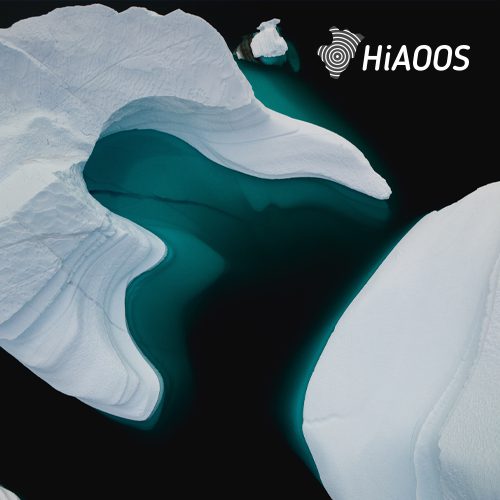In its inaugural year, the High Arctic Observing System (HiAOOS) has marked significant progress in enhancing ocean observation capabilities in one of Earth’s most remote regions. Funded by the European Commission, HiAOOS embarked on a mission to revolutionize data collection and observation in ice-covered Arctic waters, which offers unique challenges to deploying and collecting research equipment, to collecting data from recorders in the field, to charging the batteries in instruments that may be deployed for over a year at a time in the ocean.
“HiAOOS represents a significant leap forward in our search for understanding the Arctic environment,” remarked Hanne Sagen, Research Leader from Nansen Environmental and Remote Sensing Center and Project Coordinator of HiAOOS. “Our progress in this first year demonstrates our commitment to overcoming the challenges in observing the ocean under the sea ice in this remote region. Our project is part of a close collaboration with the US-funded project HiAATS – High Artic Acoustic Thermometry and Soundscape.”
Over the past year, HiAOOS has achieved several milestones, underscoring its commitment to cutting-edge research and international collaboration. Highlights include:
Technological Advancements: HiAOOS successfully tested innovative remotely operated vehicle (ROV) technology, developed by Stinger, to support long-term moorings in challenging Arctic conditions. This groundbreaking technology enables efficient data retrieval from moorings while minimizing environmental disruption.
Data Optimization: HiAOOS is dedicated to unlocking the full potential of its observing system through advanced data analysis and visualization techniques, including machine learning. Work has commenced on integrating diverse ocean data into the Blue Insight platform, developed by Kongsberg Discovery, fostering accessibility for the broader research community.
Collaborative Initiatives: HiAOOS actively promotes international cooperation in Arctic research, evidenced by its involvement in workshops and partnerships aimed at enhancing environmental assessments and research infrastructure networks in the region.
Future Outlook: Looking ahead, HiAOOS plans to deploy a network of multipurpose moorings in the Nansen and Amundsen Basins, facilitating crucial ocean and sea ice measurements. Additionally, the project will focus on further refining its observing technology and conducting field experiments annually from 2024 to 2026, ensuring adherence to environmental impact assessments.
With the potential to revolutionize data retrieval and extend operational time for observing systems, HiAOOS is poised to reshape Arctic exploration and reduce the environmental footprint of remote operations. As HiAOOS bridges the gap between research infrastructures and industry, it catalyzes collaborative solutions that propel global innovation in ocean observations.
EurOcean is a partner of HiAOOS Consortium, WP Communication and Dissemination Leader.
